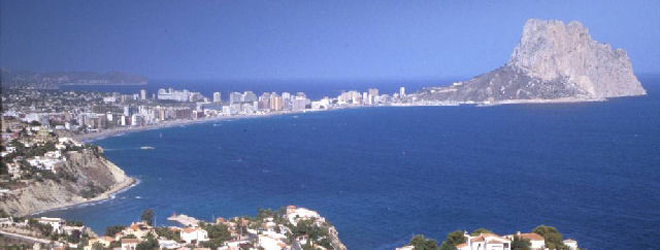
Costa Blanca
Costa Blanca
Costa Blanca means “The White Coast” and it is a region consisting of many towns in Spain. It derives its name from the 200 kilometres of white sandy beaches on the coastline of Spain. Costa Blanca starts at the town of Dénia and ends at Pilar de la Horadada.
Costa Blanca consists of 26 towns of which Alicante, Valencia, Murcia and Benidorm are the most famous. The area was invaded by the Moors in 711 AD who reigned until 1095 when Spain reclaimed the throne after defeating the Moors.
Climate
The climate of the Mediterranean is ideal all year round. Temperatures in the summer rise to within 30° Celsius and in winter the weather is mild at around 20° Celsius. Summers are hot and dry and winters are brief with a rainfall period from November to December. Minimum temperatures in the winter hardly ever reach below 7° Celsius.
The climate is one of the main reasons that Costa Blanca is such a famous holiday destination. Who would not enjoy to go swimming in an azure blue sea in winter time and enjoy sun filled days of activities while other winter time regions are freezing from the cold?
Beaches
The beaches of Costa Blanca are without doubt the main attraction for vacation goers. Unspoilt and undeveloped beaches that are enveloped by the magnificent Mediterranean Sea create a paradise for sun lovers.
The beaches are also a set-off point for many water sports and activities. Where there are marinas available at beaches, you can safely anchor a yacht or boat. Water activities include whale watching, deep sea diving, yachting, surfing and many more. In certain areas you can swim with dolphins.
Many of the beaches are surrounded by magnificent cliffs and are coved in by the cliffs. In the cliffs you will find many caves to explore and experience some of the pirate history that created an era of terror for the Spaniard for many years.
History and culture
There is no shortage of cultural and historical areas in the Costa Blanca region. With influences from Arabs, Moors and even Carthaginian Empire, it provides for a rich history. There are many museums in all 26 towns to provide a clear overview of the history and evolution of Costa Blanca.
Fortresses, light houses and castles are evidence of an era in the middle ages where Spain was plagued by pirates from the sea and enemy armies from the land always threatening to overthrow the Spanish empire. Some succeeded and left behind their mark as monuments and temples.
In the end though, Spain reclaimed victory and served as the ultimate rulers of Costa Blanca.
Nature
Costa Blanca is not only famous for its glorious beaches; it also offers magnificent natural landscapes and scenery. For the adventurer there are mountains and valleys to explore. Safari groups offer great deals to allow the tourist to experience and enjoy the best of nature that Costa Blanca has to offer.
Cuisine
Food in the Costa Blanca region is typical Spanish. Seafood is very popular and provide for dishes such as paellas, but the Mediterranean climate is excellent for the cultivation of a wide variety of fruit and vegetables, such as bananas, grapes, potatoes and tomatoes.
No outing to a Spanish restaurant or bistro would be complete without tapas, bread and bottle of wine exclusive to the region.
Conclusion
The white coasts of Costa Blanca are a true Spanish experience. By day you can enjoy the activities and scenery of the region, then end your day with a sun downer on a yacht with local wine and enjoy a culinary feast provided by the host town.